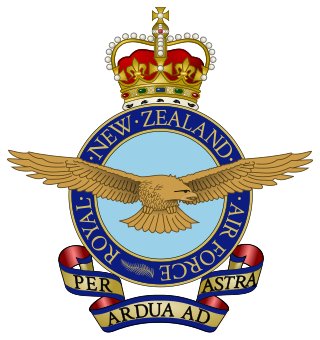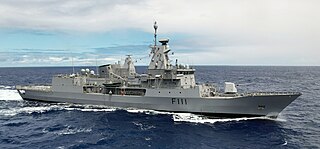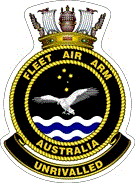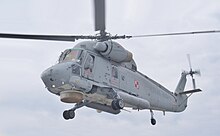
The Kaman SH-2 Seasprite is a ship-based helicopter originally developed and produced by American manufacturer Kaman Aircraft Corporation. It has been typically used as a compact and fast-moving rotorcraft for utility and anti-submarine warfare (ASW) missions. Early on it was modest sized single-engined naval utility helicopter, and progressed to twin-engine ASW and SAR, and the latest model served well into the 21st century, with G model in active service in the 2020s with Egpyt, New Zealand, Peru, and Poland.

The Royal New Zealand Air Force is the aerial service branch of the New Zealand Defence Force. It was formed initially in 1923 as a branch of the New Zealand Army, being known as the New Zealand Permanent Air Force, becoming an independent air force on 1 April 1937.

The Sikorsky SH-60/MH-60 Seahawk is a twin turboshaft engine, multi-mission United States Navy helicopter based on the United States Army UH-60 Black Hawk and a member of the Sikorsky S-70 family. The most significant modifications are the folding main rotor blades and a hinged tail to reduce its footprint aboard ships.
Kaman Corporation is an American aerospace company, with headquarters in Bloomfield, Connecticut. It was founded in 1945 by Charles Kaman. During the first ten years the company operated exclusively as a designer and manufacturer of several helicopters that set world records and achieved many aviation firsts.

The Westland Wasp is a small 1960s British turbine-powered, shipboard anti-submarine helicopter. Produced by Westland Helicopters, it came from the same Saunders-Roe P.531 programme as the British Army Westland Scout, and is based on the earlier piston-engined Saunders-Roe Skeeter. It fulfilled the requirement of the Royal Navy for a helicopter small enough to land on the deck of a frigate and carry a useful load of two homing torpedoes.

The Royal New Zealand Navy is the maritime arm of the New Zealand Defence Force. The fleet currently consists of nine ships. The Navy had its origins in the Naval Defence Act 1913, and the subsequent purchase of the cruiser HMS Philomel, which by 1921 had been moored in Auckland as a training ship. A slow buildup occurred during the interwar period, and then perhaps the infant Navy's most notable event occurred when HMS Achilles fought alongside two other Royal Navy cruisers at the Battle of the River Plate against the German ship, Graf Spee, in December 1939.

The Anzac class is a ship class of ten frigates; eight operated by the Royal Australian Navy (RAN) and two operated by the Royal New Zealand Navy (RNZN). During the 1980s, the RAN began plans to replace the River-class destroyer escorts with a mid-capability patrol frigate and settled on the idea of modifying a proven German design for Australian conditions. Around the same time, the RNZN was seeking to replace their Leander-class frigates while maintaining blue-water capabilities. A souring of relations between New Zealand and the United States of America in relation to New Zealand's nuclear-free zone and the ANZUS security treaty prompted New Zealand to seek improved ties with other nations, particularly Australia. As both nations were seeking warships of similar capabilities, the decision was made in 1987 to collaborate on their acquisition. The project name is taken from the Australian and New Zealand Army Corps of the First World War.

HMAS Parramatta is an Anzac-class frigate of the Royal Australian Navy (RAN). One of ten warships built for the RAN and Royal New Zealand Navy (RNZN) based on the MEKO 200 design, Parramatta was laid down in 1999, launched in 2003, and commissioned into the RAN in 2003. During her career, the frigate has been deployed to the Middle East on several occasions. In early 2015, Parramatta was docked to undergo the Anti-Ship Missile Defence (ASMD) upgrade. She completed these upgrades in April 2016.

HMNZS Te Kaha (F77) is one of ten Anzac-class frigates, and one of two serving in the Royal New Zealand Navy (RNZN). The name Te Kaha is Māori, meaning 'fighting prowess' or 'strength'.

HMAS Perth is an Anzac-class frigate of the Royal Australian Navy (RAN). The last ship of the class to be completed, she was built by Tenix Defence and commissioned into the RAN in 2006. In 2007, Perth became the first major warship of the RAN to be commanded by a woman. During 2010 and 2011, the frigate was used as the testbed for a major upgrade to the Anzac class' ability to defend themselves from anti-ship missiles.

HMAS Warramunga is an Anzac-class frigate of the Royal Australian Navy (RAN). One of ten frigates built for the Australian and New Zealand navies, Warramunga was laid down by Tenix Defence in 1997 and commissioned in 2001. During her career, the frigate has operated in the Persian Gulf as part of Operation Catalyst, and undertaken anti-piracy operations off Somalia. Warramunga underwent the Anti-Ship Missile Defence (ASMD) upgrade during 2014. She is active as of October 2022.

The MU90 Impact is a Franco-Italian advanced lightweight anti-submarine torpedo of the third generation developed for the French and Italian navies, as well as for export. It is designed to outperform the United States-built Mark 54 in and was developed in a special MU90 Hard Kill version for anti-torpedo defence. It is built by EuroTorp, a consortium of French and Italian companies.

No. 3 Squadron RNZAF is a unit of the Royal New Zealand Air Force (RNZAF). It currently operates NHIndustries NH90 and Agusta A109 helicopters. The squadron was initially formed as a territorial unit of the New Zealand Permanent Air Force in Christchurch in 1930. During World War II, the squadron served in the Pacific, undertaking patrol operations. In the early post war period, the squadron was converted to a Territorial formation flying fixed wing aircraft, but later converted to rotary wing aircraft, and returning to permanent status. Since then, personnel from the squadron have served in the Vietnam War, East Timor, Singapore, the Sinai, and the Solomon Islands.

HMNZS Te Mana (F111) is one of ten Anzac-class frigates and one of two serving in the Royal New Zealand Navy (RNZN). The name Te Mana is Māori, approximately translating as 'status' or 'authority'. The ship was laid down under the joint Anzac project by Tenix Defence at Williamstown, Victoria in 1996, launched in 1997, and commissioned into the RNZN in 1999.

No. 6 Squadron RNZAF is a maritime squadron of the Royal New Zealand Air Force. It has a history going back to World War II, when it operated flying boats, and has been disbanded and re-formed several times through changes in the country's military structure. The squadron motto, originally "Fortitudine et Diligentia", is now “Vigilance with Patience”.

The Fleet Air Arm (FAA), known formerly as the Australian Navy Aviation Group, is the division of the Royal Australian Navy (RAN) responsible for the operation of aircraft. The FAA was founded in 1947 following the purchase of two aircraft carriers from the Royal Navy. FAA personnel fought in the Korean War and the Vietnam War, and participated in later conflicts and operations from host warships.

The Protector-class offshore patrol vessel is a ship class of two offshore patrol vessel (OPVs) operated by the Royal New Zealand Navy (RNZN) since 2010. The ships are named HMNZS Otago and HMNZS Wellington.

816 Squadron is a Royal Australian Navy Fleet Air Arm squadron that started out as a Royal Navy unit, 816 Naval Air Squadron.

805 Squadron was a Royal Australian Navy Fleet Air Arm squadron. Originally formed as 805 Naval Air Squadron of the Royal Navy Fleet Air Arm in 1940 and operating for the duration of World War II in both the Mediterranean and Pacific theatres. 805 Squadron was recreated as a unit of the Royal Australian Navy (RAN) in 1948, and operated from Australian aircraft carriers until 1982, having the distinction of being the last fast jet squadron in the RAN. 805 Squadron was re-established in 2001 to operate the Kaman Super Seasprite as a replacement for helicopters currently in service, but problems with the helicopters saw the project cancelled and the squadron disbanded in 2008.

The Peruvian Naval Aviation is the air branch of the Peruvian Navy. It was originally formed in 1919 as the Naval Aviators Corps but was merged in 1932 with the Peruvian Army Aviation. The service was recreated under its current name on July 3, 1963. It is currently made up of three operational squadrons and the Naval Aviation School. The squadrons are distributed among three bases: Lima-Callao, which is part of Lima's Jorge Chávez International Airport, San Juan de Marcona and Pucallpa. About 800 personnel comprise Peruvian Naval Aviation.




























